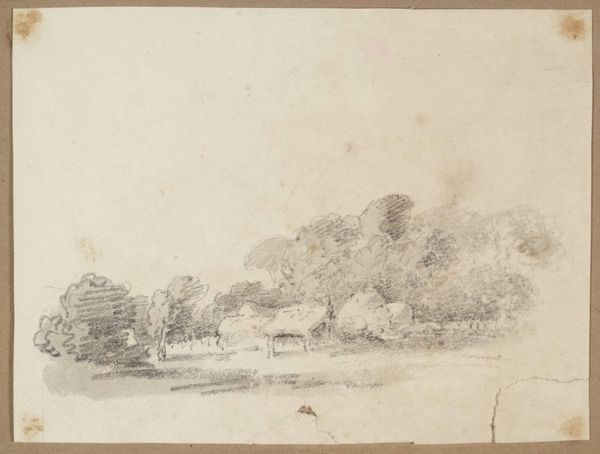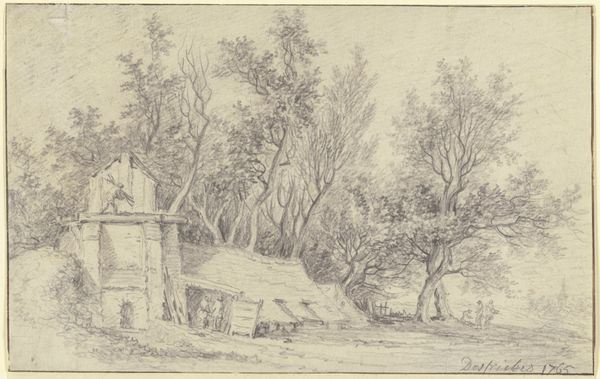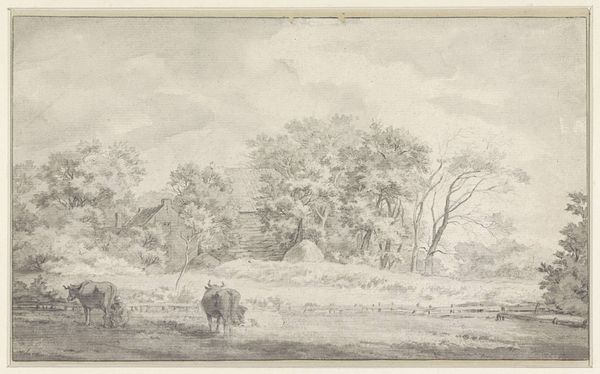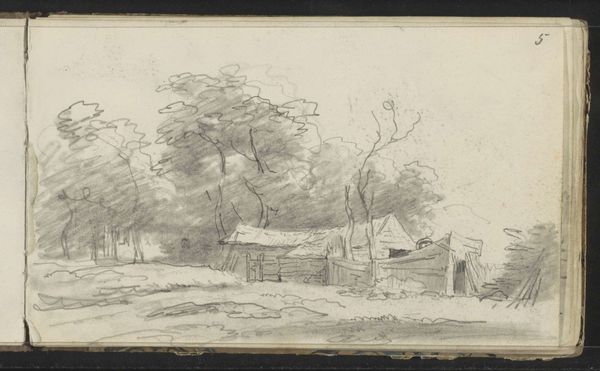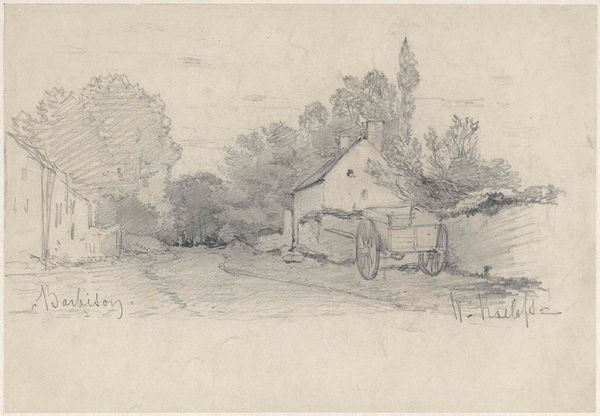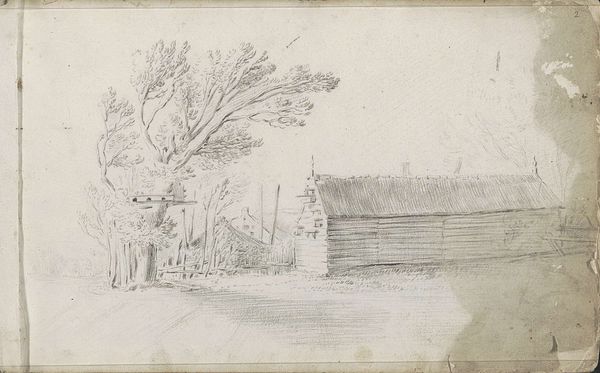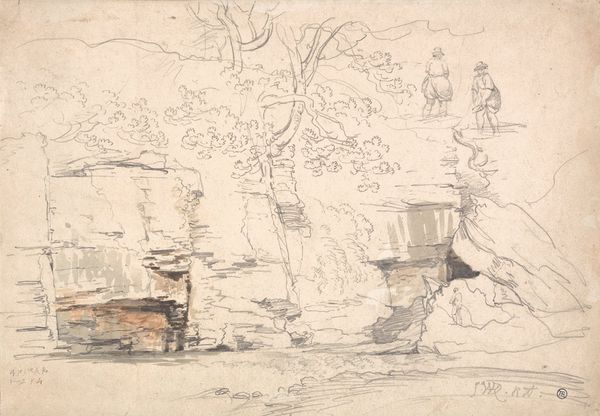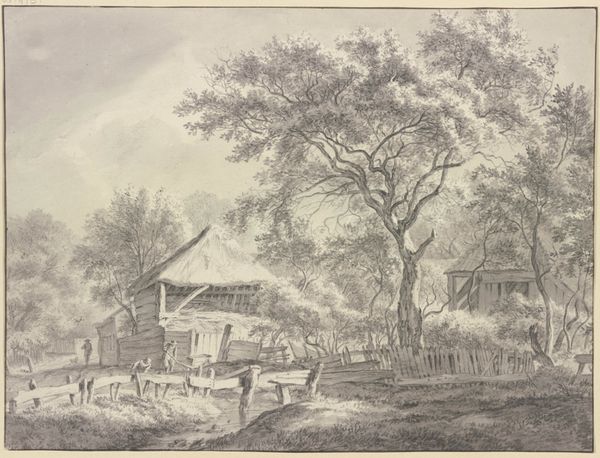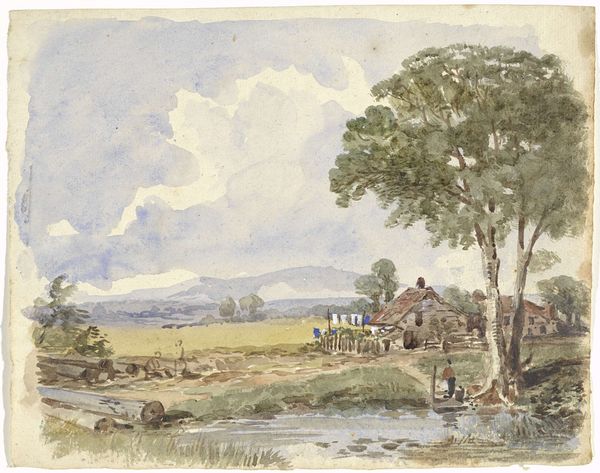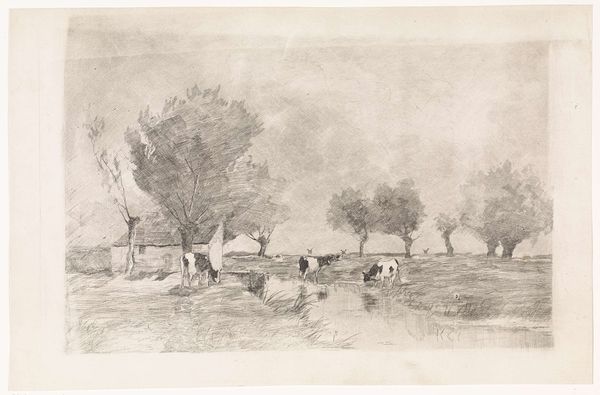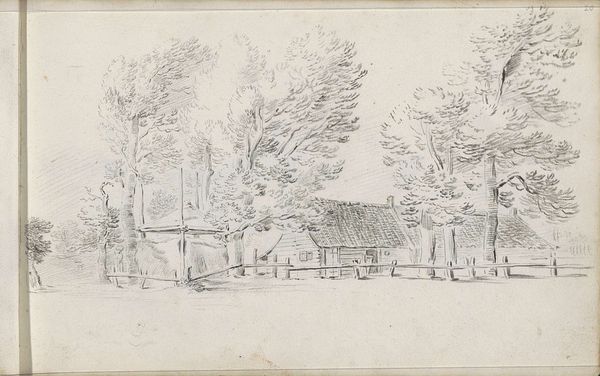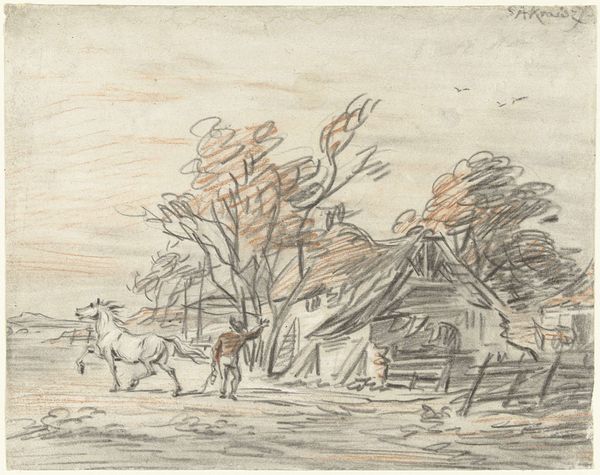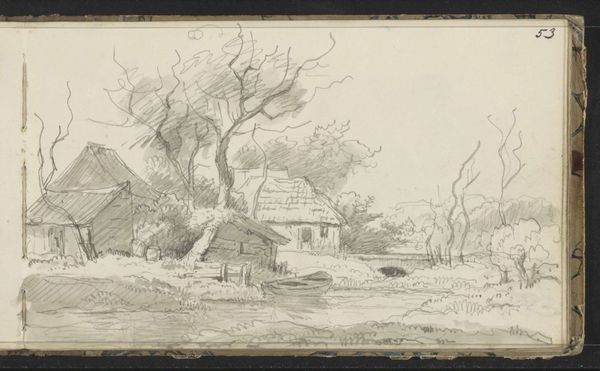
Dimensions: height 371 mm, width 533 mm
Copyright: Rijks Museum: Open Domain
Curator: Welcome. We're looking at Johannes Bosboom's "Boerderijen te Waalsdorp," or "Farmhouses in Waalsdorp," a watercolor that dates from somewhere between 1827 and 1891, part of the collection here at the Rijksmuseum. Editor: It's incredibly atmospheric, almost dreamlike. The soft washes of color create this hazy, nostalgic feel. Curator: Bosboom came from a family of builders, and that certainly influenced his artistic eye. He was fascinated by buildings, particularly the humble architecture of the Netherlands. This watercolour gives us insight into how people lived, away from the growing urban centres. Editor: Exactly, the means of construction are key. You can see the basic shapes of the structures, and that even the placement of the materials and natural objects indicates this division of land that we now associate with property ownership. Curator: And consider Waalsdorp itself. During this period, the area would have been outside of the urban sprawl of The Hague, a village providing agricultural goods. It’s fascinating to see this through a lens of early Romanticism and the enduring Dutch Golden Age landscape tradition. Editor: Absolutely. Romanticism always idealizes this image of labor that never shows you the sweat and pain involved. Still, look closely at how the paint is layered and the quick brushstrokes that allow him to quickly get his initial concept on paper, preserving the immediate interaction between the artist and the landscape. Curator: Yes, Bosboom’s contemporaries saw these kinds of works as somewhat conservative, rooted in tradition even as industrialization swept across the nation. Yet, by focusing on the materiality of ordinary life, Bosboom also creates something quietly radical. The scale suggests an artist deeply connected to and embedded within their environment, using art to preserve a vanishing community. Editor: I agree. And this speaks volumes, it isn't just representation of location; the artmaking materials themselves also indicate modes of production and life. Bosboom isn't merely recording buildings; he's offering a glimpse into a particular time. Curator: Thinking about this in the broader scope of Dutch art history, this watercolour captures something crucial about national identity and rural transformation during Bosboom's life, while making this image so impactful to modern day viewers. Editor: Definitely! This image preserves a bygone relationship with land and architecture through delicate material gestures.
Comments
No comments
Be the first to comment and join the conversation on the ultimate creative platform.
